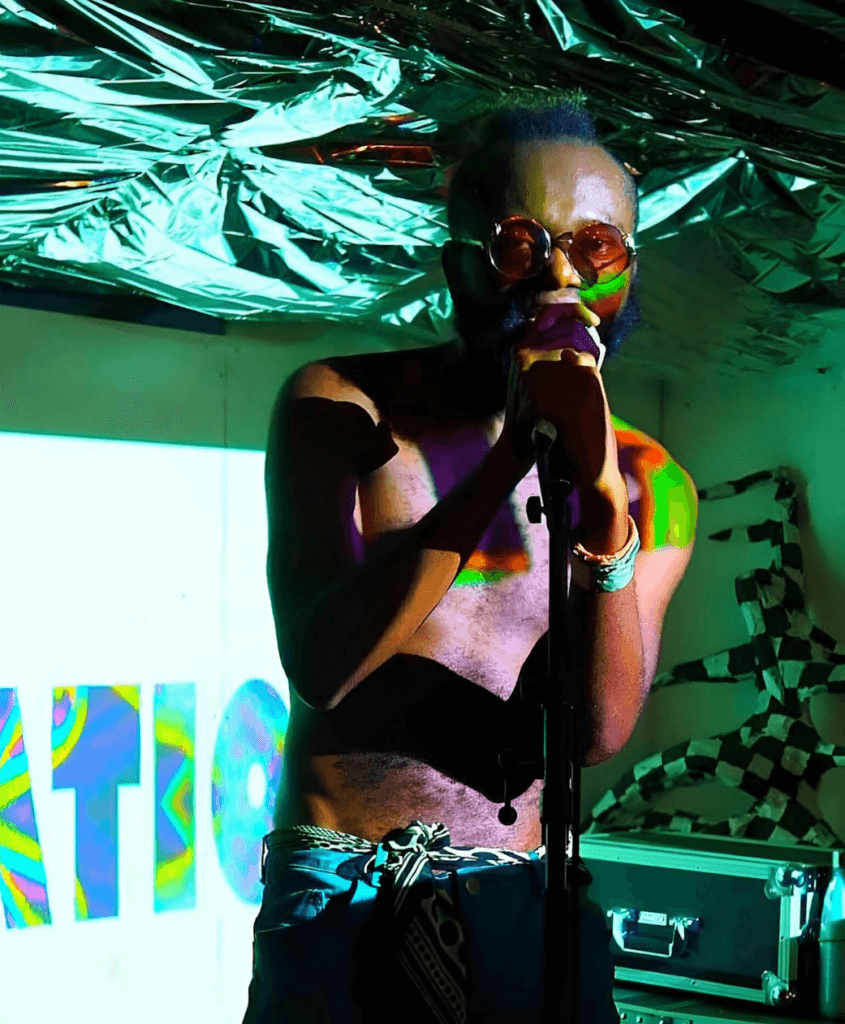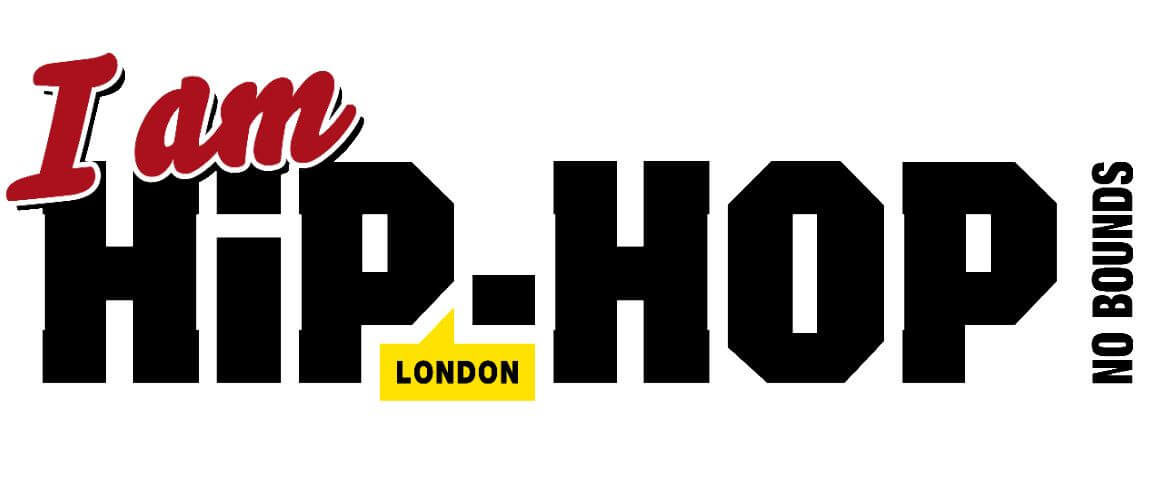
Samiir Saunders at Supernormal Festival by Antonio Roberts @hellocatfood (2022)
Samiir Saunders is an artist whose work transcends conventional boundaries, blending spoken word, alternative hip hop, and performance art to create deeply immersive and thought-provoking experiences. Saunders’ approach is rooted in the belief that different concepts need distinct pathways to come to life, allowing each medium to contribute uniquely to the overall message. In this exclusive interview, conducted ahead of his performance at the renowned @Disturbance festival, we delve into Saunders’ innovative multimedia poetry, the profound themes that influence his work, and his commitment to accessibility and inclusivity. We also get a sneak peek into Saunders’ upcoming projects and his aspirations for fostering curiosity, compassion, and vulnerability within communities. Join us as we explore the artistry of Samiir Saunders and his journey towards inspiring radical change through creativity.
Can you tell us more about your multimedia poetry and what inspired you to blend spoken word, alternative hip hop, and performance art?
I think that different concepts need to come to life through different pathways in order to get the message across, so I try to explore, experiment, and let the different media do some of the work. Spoken word is often a very minimalist way of presenting language, which really draws attention to the deliberate word choice and poetic devices themselves. Hip hop and rap carry a whole radical legacy. They allow me to be rhythmic and playful and colourful and let the audience feel my words through music. Performance art draws attention to the silences and tends to create really immersive and quiet moments within the performance space. All of these are tools. I try to keep a well-stocked toolkit!
How do the themes of grind culture, isolation, shame, miscommunication, intimacy, and the internet influence your work, and what message do you hope to convey through them?
A friend of mine recently said, “The greatest gift that a poet can give is hope”. I think capitalism devours our hope in order to sustain itself, so, many of us desperately need our hope replenished. I think we absorb a lot of lies about money and productivity being the keys to prove our worth and validate our existence. I think many of us are barely scraping by, we are overworked, underpaid, and under-resourced, until our ability to imagine a better world is suffocated by the need for survival. I think a lot of us are lonely. I think a lot of us are motivated by shame and fear rather than desire and joy, or we’re on autopilot. I think that, to heal all of these wounds, our souls, our relationships, our communities, and the world at large, requires radical change. I believe that change first requires hope. I hope that by talking about these topics with playfulness, wit, honesty, and vulnerability, I am able to play a small part in the change that is to come.
@Disturbance is known for its commitment to accessibility and inclusivity. How does this align with your own artistic values and practices?
If my aim is to inspire hope and nurture radical change, it is especially important that I am able to connect with those who are typically excluded from spaces and conversations.
Can you give us a sneak peek into the new work you will be presenting at @Disturbance? What can the audience expect from your performance?
I’ll be performing a segment of a fictional gameshow, playing both the host and the contestants through a mix of live performance and pre-recorded video. It’s going to be intimate, silly, camp, and interrogative of power dynamics.
Your work has been featured in various prestigious venues and festivals. How does performing at @Disturbance compare to your previous experiences?
I am excited to integrate the accessibility tools and interaction with pre-recorded video into my work. This residency has given me a lot of space to experiment and take risks.
How do you approach the integration of captioning, audio description, and BSL translation in your performances? Has this influenced your creative process in any way?
Yeah, it’s influenced my creative process in the way I have written the dialogue, essentially giving image descriptions in character. I’m also trying to be intentional with my word choice so that meanings can be translated as smoothly as possible into BSL.
As an artist who often addresses contemporary issues, how do you feel your work resonates with audiences in today’s digital age?
I mentioned before that I think a lot of us are lonely. It’s been said a million times already, but I think the digital age comes with its own unique flavour of paradoxically hyperconnected loneliness. I try to resonate with people by speaking to the specific numbness that comes with the cycle of burning out and then zoning out.
I try to speak to the inauthenticity we adopt to survive a world that isn’t built for us to thrive in. I share my embodied experience of that very present pain, but also my dreams of a more intimate and authentically connected future.
Can you talk about your upcoming EP, and what else we can look forward to with your music?
My upcoming EP is called “afternoon, offline”, it’s going to be another self-published project. It will be a collection of punk/glitch-hop/spoken word tracks which will explore themes of community, technology, and resistance. I’ve been the only vocalist on most of my previous releases, so for this one I’ve been reaching out to other artists to lend their voices. It’s currently still in the works but I’m really excited to share it when it’s done!
Looking forward, what are your aspirations for your artistic practice, and how do you envision your role in fostering curiosity, compassion, and vulnerability in communities?
I want to work directly with communities by meeting people where they are – i.e. in libraries, parks, community centres etc. I also want to meet people where they are virtually, through things like social media, Zoom, and YouTube. I want to meet people in any space that they feel safe enough to self-reflect. I’d like to foster curiosity, compassion, and vulnerability by displaying these qualities in my performances, but also by directly nurturing them in workshops. I’d like to do more creative writing and access rider workshops, as these have provided very tangible tools that people can use.
Ugly Duck Bermondsey is excited to announce the first ever summer edition of @Disturbance, taking place on Saturday June 22 & Sunday June 23. Following the success of previous programmes championing LGBTQIA+ performance, video and digital artists, @Disturbance makes maximum use of Ugly Duck’s Tanner Street location, a former Victorian factory with multiple spaces. A surreal outdoor party will lead to an interactive indoor set, full of wonder and the unexpected.
Purchase Tickets HERE.
